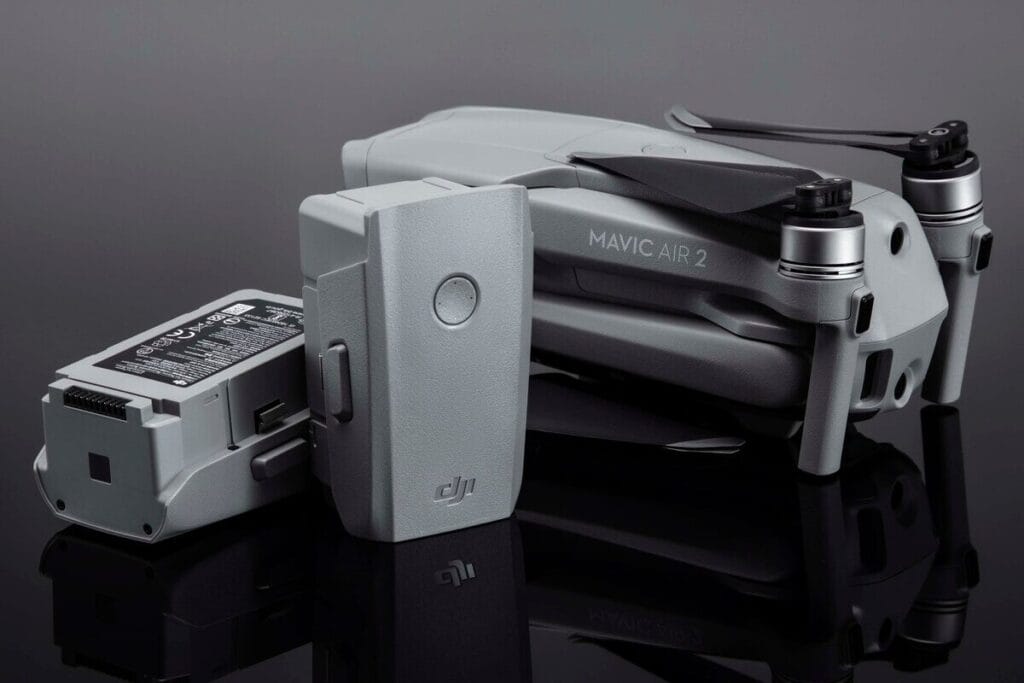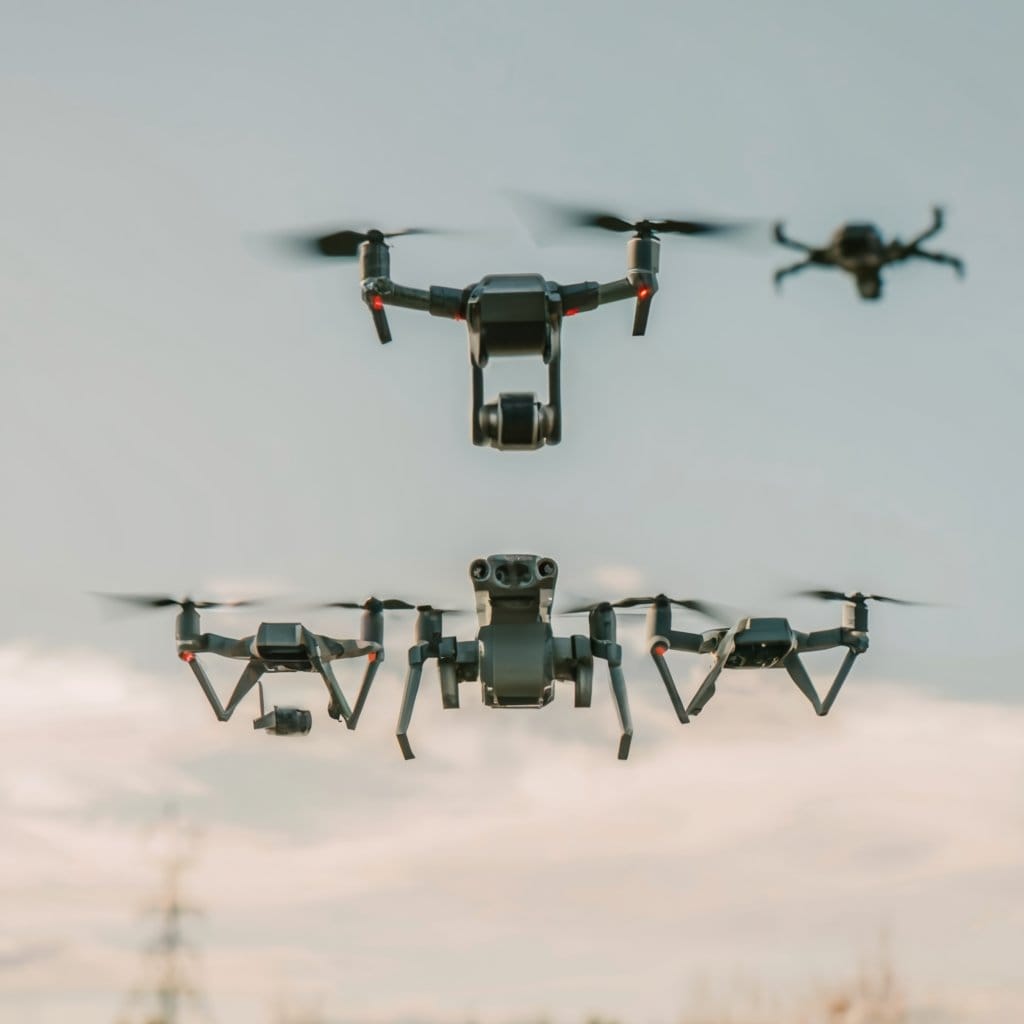Unveil the world of drone technology with a deep dive into drone transmitters and receivers. These crucial components are the backbone of every successful drone flight, ensuring seamless communication between pilot and aircraft. Explore how drone transmitters provide control commands while receivers interpret and execute these instructions, allowing for precise maneuvering in the skies. Discover the intricate mechanisms behind these devices and their pivotal role in enhancing flight performance and safety. Stay tuned to unravel the complexities of drone communication systems and gain a comprehensive understanding of how drone transmitter and receiver technologies work together harmoniously to elevate your aerial adventures.

Key Takeaways
- Choose Wisely: When selecting a drone transmitter, consider factors like range, frequency, and compatibility to ensure seamless communication with your drone.
- Upgrade Strategically: For FPV drones, prioritize advanced features like telemetry data transmission and diversity receivers to enhance your flying experience.
- Optimize Setup: Properly configure your transmitter and receiver by following manufacturer guidelines to establish a reliable connection with your drone.
- Stay Proactive: Regularly maintain your gear by checking for signal interference, updating firmware, and replacing worn-out components to prolong the lifespan of your equipment.
- Practice Responsibly: Familiarize yourself with local regulations, fly in safe areas, and always conduct range tests before flying to prevent signal loss and ensure a secure flight experience.
- Enhance Performance: Experiment with antenna placement, invest in quality equipment, and stay updated on new technologies to boost the performance of your drone’s radio system.
Understanding Radio Basics
Transmitter Functions
A transmitter plays a crucial role in directing drone movement by sending signals to the receiver. It controls key functions like throttle, yaw, pitch, and roll. Features such as frequency determine signal strength and interference resistance. Investing in a high-quality transmitter ensures precise control and reliability during flights.
- Ensures precise control
- Determines signal strength
- Enhances piloting experience
Receiver Roles
The receiver captures signals from the transmitter, translating them into commands for the drone’s components. Binding is essential to establish a secure connection between the two devices. When selecting a radio receiver, consider factors like range, which impacts the distance at which signals can be received, and telemetry support for data transmission.
- Translates commands
- Establishes secure connection
- Considers range and telemetry support
Frequency Basics
Frequencies refer to the number of times a signal oscillates per second and are critical for communication between drone transmitters and receivers. Compatibility between the transmitter’s output frequency and the receiver’s input frequency is vital for seamless operation. Choosing the right frequency ensures optimal performance without interference.
Firmware Importance
Firmware acts as the operating system for radio transmitters, enabling users to interact with their drones effectively. Popular firmware options like EdgeTX, OpenTX, FreedomTX, and ETHOS offer different features and customization options. The choice of firmware significantly influences user experience and the capabilities of drone control.
- EdgeTX
- OpenTX
- FreedomTX
- ETHOS
Choosing Your First Transmitter
Performance vs Portability
When selecting a drone transmitter, balancing performance and portability is crucial. High-performance drone transmitters offer advanced features for precise control, while portable ones prioritize convenience. This choice significantly impacts your piloting experience, affecting range, signal stability, and responsiveness.
To enhance flight capabilities, opt for drone transmitters with superior performance if you prioritize control precision and signal reliability. However, if you value ease of transport and quick setup, compact drone transmitters are more suitable. Finding the right balance ensures an enjoyable flying experience tailored to your needs.
Value and Versatility
Investing in a versatile drone transmitter and receiver system provides significant value. Versatile systems can adapt to various flying scenarios and support different equipment setups effortlessly. They offer compatibility with multiple receiver brands, maximizing flexibility during flights and equipment upgrades.
Versatile systems not only streamline your flying experience but also future-proof your setup by accommodating changes in equipment or flying styles. Prioritizing value-driven purchases ensures that you get the best of both worlds: quality performance and adaptability for evolving needs.
Ergonomics and Design
Ergonomics play a vital role in drone transmitter design as they directly impact user comfort during piloting sessions. A well-designed transmitter with ergonomic features like comfortable grips and responsive sticks reduces fatigue during prolonged flights. These design elements enhance user control precision and overall flying experience.
Considering ergonomics when choosing a transmitter is essential for maintaining comfort and control accuracy during extended flying sessions. Opting for a transmitter with thoughtful design features not only improves handling but also minimizes strain on your hands and wrists over time.
Key Features to Consider
Link Protocols
Radio link protocols like ExpressLRS and TBS Crossfire are commonly used in FPV drones for reliable communication. Each protocol offers unique features and benefits that cater to different user needs. Selecting the right link protocol is crucial for enhancing drone control and connectivity during flights.
When choosing between radio link protocols, understanding their specific features is essential. ExpressLRS stands out for its low latency and long-range capabilities, making it ideal for racing drones requiring quick response times. On the other hand, TBS Crossfire is renowned for its robustness in challenging RF environments, ensuring stable connections over extended distances.
The selection of a suitable radio link protocol directly impacts the overall performance and responsiveness of the drone system. By evaluating the features and benefits of each protocol, users can make informed decisions based on their flying preferences and requirements.
Compatibility Essentials
Ensuring compatibility between drone transmitters and receivers is a critical aspect of building a functional drone system. Incompatibility issues can lead to signal loss, poor responsiveness, or even complete system failure during flight operations. Therefore, it is vital to carefully check compatibility specifications before purchasing any components.
To guarantee seamless compatibility, users should verify that both transmitter and receiver models are designed to work together seamlessly. Checking for matching frequencies, signal protocols, and firmware versions is essential to avoid any potential issues that may arise from incompatible setups.
By prioritizing compatibility when selecting transmitter and receiver components, users can prevent technical glitches and ensure smooth operation of their drone systems throughout various flying scenarios.
Range Optimization
Optimizing the range of drone transmitter and receiver systems requires careful consideration of several factors influencing signal transmission. Frequency bands, antenna types, power output levels, and environmental conditions all play significant roles in determining the effective range of communication between the drone and remote controller.
Maximizing signal range without sacrificing quality involves strategic placement of antennas on both the transmitter and receiver units. Users can experiment with antenna orientations and configurations to find optimal setups that deliver extended range coverage without compromising signal stability or clarity.
Implementing range optimization strategies enhances overall flight experiences by providing pilots with extended control distances and reliable connectivity throughout their aerial maneuvers.
Battery Life Tips
Extending the battery life of drone transmitters and receivers is essential for prolonged flight durations and uninterrupted piloting experiences. Efficient battery management practices can significantly impact operational efficiency by reducing downtime due to frequent recharging cycles.
Regularly monitoring battery levels during flights helps users gauge remaining power reserves accurately, preventing sudden shutdowns mid-air. Implementing power-saving settings on drone transmitters further extends battery longevity by minimizing energy consumption during operation.

Advanced Features for FPV Drones
Telemetry Support
Telemetry support plays a crucial role in drone receiver systems, providing essential data to the pilot. This feature offers real-time information on flight controller status, battery voltage, and signal strength. By utilizing telemetry, pilots can enhance their situational awareness during flights by monitoring critical metrics without diverting their attention from flying. The ability to access telemetry data enables pilots to make informed decisions, ensuring optimal performance and safety throughout the flight.
The benefits of real-time telemetry feedback are immense in monitoring drone performance. Pilots can track vital parameters such as altitude, speed, and GPS location, allowing them to adjust their flight strategy accordingly. With telemetry support, pilots can identify potential issues early on, prevent accidents, and optimize their flying experience.
Stick Handling Techniques
Mastering stick handling techniques is essential for achieving precise control over FPV drones. Effective stick handling involves understanding the nuances of stick sensitivity and responsiveness to execute smooth maneuvers. Pilots must develop a delicate touch on the sticks to navigate through obstacles with accuracy and finesse.
To improve flight control accuracy, pilots should focus on honing their stick handling skills through practice and experimentation. Adjusting stick sensitivity settings on the transmitter can help tailor the controls to individual preferences. By mastering stick handling techniques, pilots can elevate their piloting skills and tackle challenging flight scenarios with confidence.
Switch Functions
Switches on drone transmitters serve as versatile tools for activating various features during flights. These switches can be customized to trigger specific functions such as full-size gimbals or mini gimbals, adjusting camera angles or switching between different flight modes seamlessly. Pilots benefit from the convenience of using switches for quick adjustments without interrupting their flying rhythm.
Customizing switches based on personal preferences allows pilots to adapt quickly to changing conditions while in-flight. The versatility of switch functions enhances the overall user experience by providing easy access to essential features at the touch of a button. Pilots can configure switches according to their flying style, making it easier to navigate complex maneuvers with precision.
Making the Right Choice
Affordable Options
When it comes to budget-friendly drone transmitter and receiver options, beginners have several choices. These systems cater to novice pilots by offering essential functionalities at reasonable prices. For instance, entry-level transmitters like Flysky FS-i6X provide basic controls for smooth flight operations.
Affordable drone control systems often feature simplified interfaces that are easy to navigate, making them ideal for individuals new to piloting drones. These options prioritize user-friendly designs without compromising on performance or reliability. For example, the FrSky Taranis Q X7 offers a balance between affordability and functionality.
- Budget-friendly options cater to novice pilots
- Simplified interfaces prioritize user-friendly designs
- Essential functionalities are offered at reasonable prices
Round-up Recommendations
Beginners looking to purchase drone transmitters and receivers should consider several key points. Prioritize features such as range, signal reliability, and compatibility with different drone models. Opt for systems that offer stable connections and interference-free communication during flights.
When selecting a drone control system, it’s crucial to assess factors like ease of setup, ergonomic design, and overall durability. Look for transmitters and receivers that align with your specific flying needs and skill level. Investing in quality equipment can enhance your piloting experience and contribute to the long-term success of your drone flights.
- Consider range, signal reliability, and compatibility
- Assess ease of setup, ergonomic design, and durability
- Prioritize stable connections and interference-free communication
Setting Up Your Transmitter and Receiver
Linking Process Simplified
To ensure seamless connectivity, simplify the process of linking your drone transmitter and receiver. Begin by turning on both devices and accessing the binding mode. Then, follow the manufacturer’s instructions to bind them effectively.
Next, provide step-by-step guidance for binding the transmitter and receiver. Start by locating the bind button on each device, pressing them simultaneously, and waiting for the connection to establish. Test the link by moving control sticks to verify responsiveness.
For troubleshooting tips, common issues may include signal interference or incorrect binding procedures. Ensure antennas are properly positioned, and rebind if necessary. Check for any firmware updates that could resolve connectivity issues.
Firmware Updates
Regularly updating firmware is crucial for optimal transmitter performance. These updates often include bug fixes, security enhancements, and new features that improve overall functionality. By staying up-to-date with firmware releases, you can maximize your drone’s capabilities.
The benefits of firmware updates extend to enhancing system stability and addressing any vulnerabilities that could compromise performance. To update your drone transmitter’s firmware safely, download the latest version from the manufacturer’s website onto a compatible device.
Follow guidelines provided by the manufacturer to install the firmware update correctly. This typically involves connecting your transmitter to a computer via USB cable, running the update software, and following on-screen instructions. Once completed, test your transmitter to ensure proper functionality.
Maintaining Your Gear
Battery Management
Proper battery management is crucial for drone transmitters and receivers to ensure optimal performance. Regularly charging batteries and avoiding overcharging can extend their lifespan. Storing batteries in a cool, dry place away from direct sunlight is essential to prevent damage. Maximize battery lifespan by not letting them drain completely before recharging.
- Charge drone batteries after each use to maintain their health.
- Store batteries at around 50% charge when not in use for an extended period.
- Avoid exposing batteries to extreme temperatures to prevent degradation.
Range Checks
Conducting range checks before flying drones is vital for safe operations. These checks verify signal strength and stability, reducing the risk of signal loss during flights. Performing range checks helps ensure a strong connection between the transmitter and receiver.
- Before every flight, check the range by gradually increasing the distance between the drone and controller.
- Monitor signal strength indicators on the controller to assess connection quality.
- Ensure there are no obstacles or interference that could disrupt the signal during flight.
Closing Thoughts
In conclusion, understanding the fundamental aspects of radio communication, selecting a suitable transmitter, and considering essential features are crucial steps in optimizing your drone’s performance. Delving into advanced features for FPV drones can enhance your flying experience significantly. Making an informed decision based on your needs and preferences is key to enjoying seamless control and reliable connectivity. Setting up and maintaining your transmitter and receiver properly ensures longevity and efficiency in your drone operations.
For those venturing into the world of drones, mastering the intricacies of drone transmitters and receivers is paramount for a successful flight experience. Remember to apply these insights when choosing, setting up, and maintaining your equipment to elevate your drone piloting skills. Stay informed, stay connected, and soar to new heights in the realm of drone technology.




